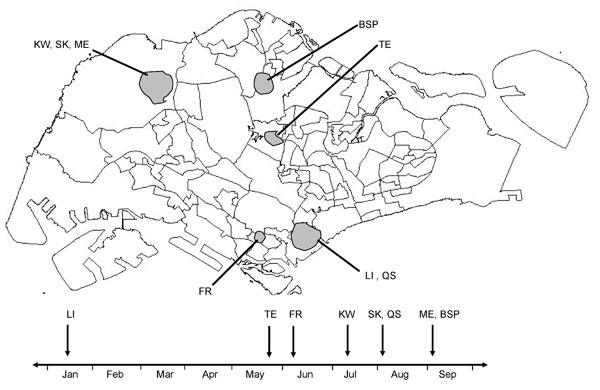Volume 15, Number 8—August 2009
Research
Entomologic and Virologic Investigation of Chikungunya, Singapore
Figure 1

Figure 1. Geographic and temporal distribution of 123 indigenous chikungunya cases in Singapore. Shading indicates the 7 cluster areas where entomologic investigation was carried out. Data include cases reported through September 2008. The arrows in the timeline shown below the map indicate the months of occurrence of the local outbreaks from the beginning of January to the end of September 2008. BSP, Bah Soon Pah Road; FR, Farrer Road; KW, Kranji Way; LI, Little India; ME, Mandai Estate; QS, Queen Street; SK, Sungei Kadut; TE, Teachers’ Estate.
Page created: October 04, 2010
Page updated: October 04, 2010
Page reviewed: October 04, 2010
The conclusions, findings, and opinions expressed by authors contributing to this journal do not necessarily reflect the official position of the U.S. Department of Health and Human Services, the Public Health Service, the Centers for Disease Control and Prevention, or the authors' affiliated institutions. Use of trade names is for identification only and does not imply endorsement by any of the groups named above.